

Great Missenden lies in the valley between Aylesbury and Amersham. The A413 used to run through this place (which appears to be town near the station but villagey elsewhere) but now by-passes it to the north and effectively cuts off the town from its parish church. A pleasant walk from the main street winds up to the church where a modern bridge takes the roadway over the by-pass and affords splendid views of the church itself.
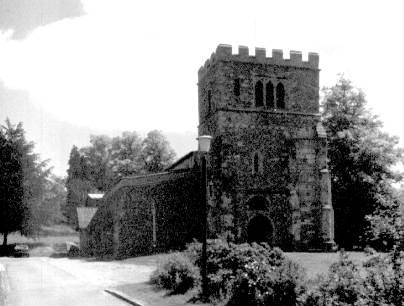
The church stands in an area that appears to have been especially scooped out of the hillside to accomodate it. The embattled west tower is also rather odd, now rectangular in plan as it was extended across the west end of the south aisle in 1732, and therefore the west door and window are off-centre and there is an extra buttress. The exterior is largely built of flint. The church consists of a clerestoried nave of four bays, three bayed aisles and transepts, N & S porches, and chancel with C19 vestry and organ chamber to the north.
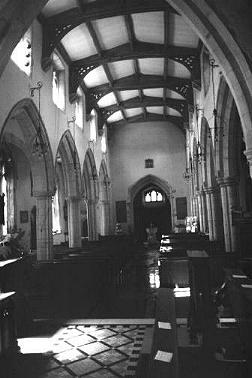
The nave has a low-pitched roof with arched braces having pierced spandrels and resting on large angel corbels. The clerestory is later than the arcades which have quatrefoil piers, double-chamfered arches with hoodmoulding and head stops in the spandrels. In contrast the tower arch, triple chamfers dying into the imposts, is rather low. Small Royal Arms above. The font, placed in front, is like an upturned Norman capital, retooled in the C19 but like many other local examples of a type known as "Aylesbury fonts". The aisles have large three-light Perpendicular windows and arches into the transepts: in fact the north aisle is wide enough for a two-bayed opening into the N transept.
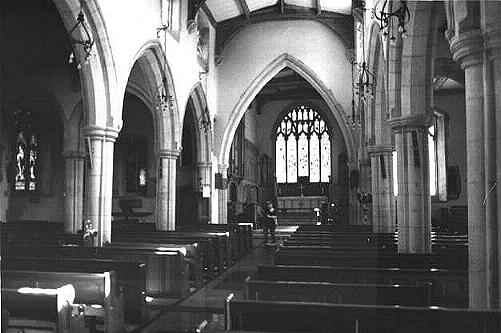
The chancel has a large five-light Perp. East window and the lower parts of its walls have exposed knapped flint. The south wall has two two-light Decorated windows in the first bay and the east bay has an odd transomed four-light window lighting the sanctuary with a big piscina and a blocked doorway. On the north side of the sanctuary is a row of seven ornate niches. The east window is also flanked by two niches, the statues not original work.
The south transept has late Perp. three-light windows but also a small two-light Decorated East window and a cusped lancet in the west wall. Squint from this transept into the chancel. Rood stairs in the north transept and a Decorated three light N window.
Notable too the near absence of monuments and the fine Victorian floor tiles, thankfully not covered up by carpeting. The main restoration was by John Oldrid Scott 1899-1901.
The church at the heart of the village is in stark contrast to the medieval church. It is a modern rather utilitarian structure of red brick, built by its appearance in the early 1970s. A view from the street and interior shot are reproduced below.
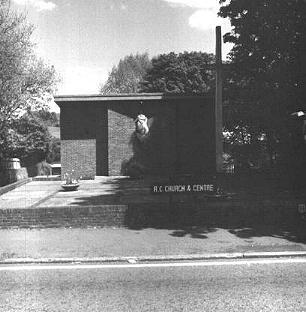
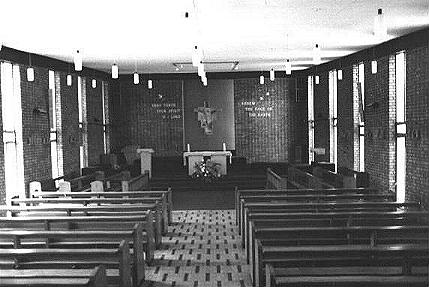
The centre of religious life in Great Missenden in medieval times was the Arroasian Abbey founded in 1133. The abbey was dissolved in 1538 and the site was coverted into a residence. The house today is largely of the late C18 and early C19, and stands on the site of the cloister and domestic buildings. The church stood to the north and was dedicated to St Mary the Virgin. Today it belongs to Buckinghamshire County Council and is a conference and training centre. It is also licensed for weddings.
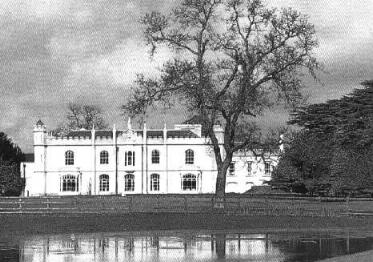
Little survives of the medieval abbey, apart from some exposed walling and a blocked window and recess just behind the present-day reception area (pictured below). A serious fire in 1985 destroyed the chief surviving feature, a large C15 roof of the former canon's dormitory. The house itself has been well restored to its early C19 appearance and there have been sympathetic extensions for bedrooms, etc, at the rear of the house..
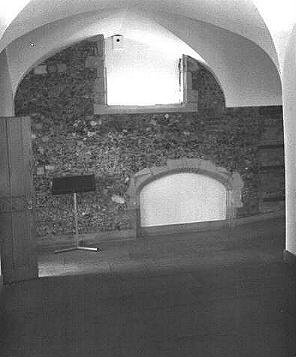
In reception, housed in glass cabinets , are fragments of the church vault discovered during excavations in 1987. These include two very ornate bosses and other carved stones which suggest that the church was of a quite rich design.
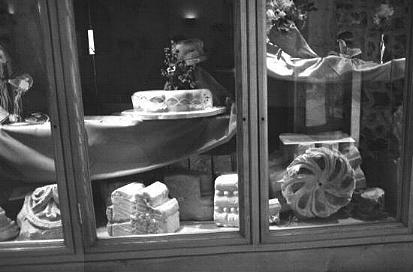
In the later years of the abbey , prior to the Dissolution, history records a very sorry state of affair on several occasions. During one visit by the Bishop of Lincoln in 1524, both the abbot and prior were found to be having an affair with a married woman of the town (which began before her marriage) and another canon had a secret set of keys to the abbey and was often to be seen in the streets of the town brandishing a sword!